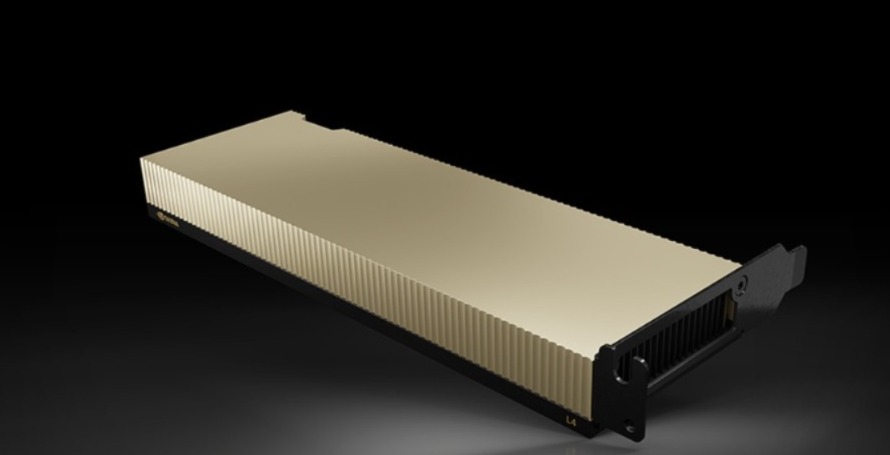
The NVIDIA L4 GPU is one of the latest additions to NVIDIA’s powerful lineup of graphics processing units (GPUs), designed with AI inference and video processing workloads in mind. Unlike its more powerful counterparts such as the NVIDIA A100 or H100, the L4 GPU focuses on providing a balanced combination of high performance and efficiency. Whether you’re looking to accelerate AI applications, improve video streaming quality, or power edge devices, the L4 GPU has a lot to offer.
In this guide, we will explore the features, benefits, and use cases of the NVIDIA L4 GPU, and how it can benefit your organization or project.
Key Features of the NVIDIA L4 GPU
1. Optimized for AI Inference
The NVIDIA L4 GPU is engineered to optimize AI inference workloads. AI inference is the process of making predictions based on a trained machine learning model, and this is where the L4 shines. With its specialized hardware, including Tensor Cores, the L4 GPU can handle real-time machine learning tasks efficiently. It is ideal for deploying AI applications that require lower latency and higher throughput.
2. Advanced Video Processing
In addition to AI workloads, the NVIDIA L4 GPU is also designed for video encoding and decoding. With support for high-quality video transcoding, the L4 is perfect for media applications, video streaming services, and live broadcasting. The ability to process multiple video streams simultaneously, without sacrificing performance, is a key feature of the L4.
3. Energy Efficiency
One of the standout features of the NVIDIA L4 GPU is its low power consumption. While it delivers robust performance, it is energy-efficient, making it an excellent choice for edge devices, data centers, and cloud applications that need to balance performance with power requirements. This low-power design ensures that your system remains cost-effective and environmentally friendly.
4. Scalable Architecture
The L4 GPU is designed with scalability in mind, which makes it suitable for large-scale AI deployments. Whether you’re running a cloud-based AI platform or a distributed system, the L4 GPU can be deployed in clusters to provide high performance across workloads. With support for multi-GPU setups, you can easily scale your infrastructure to handle more demanding tasks.
5. Integration with Cloud Services
Like other NVIDIA GPUs, the L4 integrates seamlessly into cloud environments. It works well with platforms such as NVIDIA GRID and cloud providers, offering virtual GPU (vGPU) capabilities. This makes it easy for organizations to leverage the L4’s power without needing dedicated hardware, making it an ideal solution for businesses that rely on cloud computing.
Benefits of the NVIDIA L4 GPU
- Faster AI Inference: The L4’s Tensor Cores accelerate matrix computations, making AI models run faster, improving prediction times, and reducing latency.
- Cost-Effective Solution: Compared to high-end GPUs, the L4 offers great value for applications that don’t require extreme power but still need robust performance.
- Versatility: From AI inference to video processing and cloud gaming, the L4 GPU can handle a wide variety of workloads, making it a versatile choice for different industries.
- Improved Productivity: By accelerating both AI and video workloads, the L4 GPU helps teams work more efficiently, whether they’re training models, processing video, or running real-time analytics.
Common Use Cases for the NVIDIA L4 GPU
- AI Inference for Real-Time Applications
- With the ability to process large volumes of data and return results quickly, the L4 GPU is well-suited for real-time AI applications such as chatbots, recommendation engines, and automated decision-making systems.
- Video Streaming and Media Processing
- The L4’s video processing capabilities allow it to handle video transcoding, media encoding, and other related tasks, making it ideal for platforms that stream or process video content.
- Cloud-Based Machine Learning
- When deployed in cloud environments, the L4 GPU accelerates AI-powered applications that require fast decision-making capabilities, such as fraud detection, personalized marketing, and autonomous systems.
- Edge Computing
- The power-efficient nature of the L4 GPU makes it a great choice for edge devices, where performance needs to be balanced with power consumption.
- The power-efficient nature of the L4 GPU makes it a great choice for edge devices, where performance needs to be balanced with power consumption.
NVIDIA L4 GPU Specifications
| Specification | Details |
| GPU Architecture | Ada Lovelace |
| GPU Name | AD104 |
| Memory Size | 24 GB GDDR6 |
| Memory Bandwidth | 300 GB/s |
| Power Consumption (TDP) | 72 W |
| Form Factor | Half-height, half-length, single-slot |
| PCIe Interface | PCIe 4.0 x16 |
| Shading Units | 7424 |
| Tensor Cores | 240 |
| Max Thermal Design Power | 72 W |
Conclusion: Why Choose the NVIDIA L4 GPU?
The NVIDIA L4 GPU strikes an excellent balance between performance, efficiency, and cost, making it a solid choice for AI inference, video processing, and cloud-based applications. With its scalability and energy-efficient design, it’s ideal for organizations looking to harness GPU power in a cost-effective and environmentally conscious manner.
If you’re considering adopting the L4 GPU for your workloads, it’s a smart investment for businesses looking to integrate AI and video processing without the need for high-end GPUs. Whether you’re working in media, AI, or cloud computing, the L4 GPU provides a scalable and high-performance solution for a wide range of tasks.
Leave a Reply
You must be logged in to post a comment.